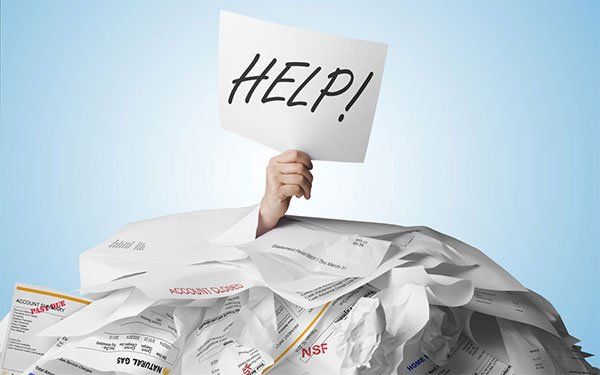Dollars & Sense

We are reminded daily about Canadian’s rising debts, now reported to be over $1.68 for every dollar earned. Bank of Canada has been stressing their concerns about the rising debt levels at every opportunity for several years, as they warn us that interest rates will eventually rise. Credit card debt is so common today that many of us don’t even realize when we are heading into financial danger. Everyone is doing well until something unexpected happens, and those of us that don't have a 6 to 8-month emergency fund tucked away, suddenly face the reality of our consumer debt burden. So ask yourself, are you relying on your credit cards to get through the month? Do you worry or cringe when you are at the cashier, watching the bill add up and wonder if you are at your credit limit yet? Do you have money stress? 70% of Canadians report that they are worried about money, so remind yourself that you are not alone if answer yes to any of these questions. For most of us, our debt issues are not much fun to think about, but the worry and strain on our lives and relationships make it a necessity. What happens when interest rates eventually go up? Oops, you never thought of that? Have you calculated what your payment would be if your interest rate goes up 1 or 2 percent at the end of your mortgage term? Many of us have relied on a debt consolidation or equity-take-outs to set our budgeting straight when it's derailed. While most people have heard about the new mortgage rules, the realization of how this impacts you usually doesn’t happen until you apply for new financing. The new mortgage regulations, along with the uncertainty in housing prices (are they going up, are they going down?), makes mortgage financing more onerous than two to three years ago. November 30th, 2016 regulations have a very significant impact that many consumers have not realized yet. While interest rates have not increased significantly, loan to value, debt ratios, product options, and beacon score requirements have changed a lot, and for some that change is quite dramatic. If you are counting on a mortgage refinance to get your debt under control, you might be surprised with new conditions, or when you are being advised to seek a “B” lenders assistance instead. “B” lenders are willing to provide financing to those declined by the “A” side, but at a premium cost, charging additional fees and higher interest rates. In the current market, however, “B” lenders and private lenders, including Mortgage Investment Companies, are decidedly more cautious as well. There are steps to set your budget and credit card spending on the right path so that you won’t face these problems. It will take time and perseverance. The first step is to review the household budget and debt situation with everyone involved. Ask yourself honestly if your money habits are putting you further and further into debt. The cycle of increasing debt stops the minute you become conscious of your habits and then decide to change them. Next, design a money plan, and then live your new reality one hundred percent. Getting out of debt may require short-term pain for long-term financial freedom. However, remind yourself that you are worth it because this goal is immeasurable in the peace of mind and security you will attain. You don’t have to be one of the 96% of Canadians that pay themselves last or the 70% that have money stress. You just have to decide to take control of your money, break any bad habits, spend consciously, and start on a new path to financial health and freedom.
